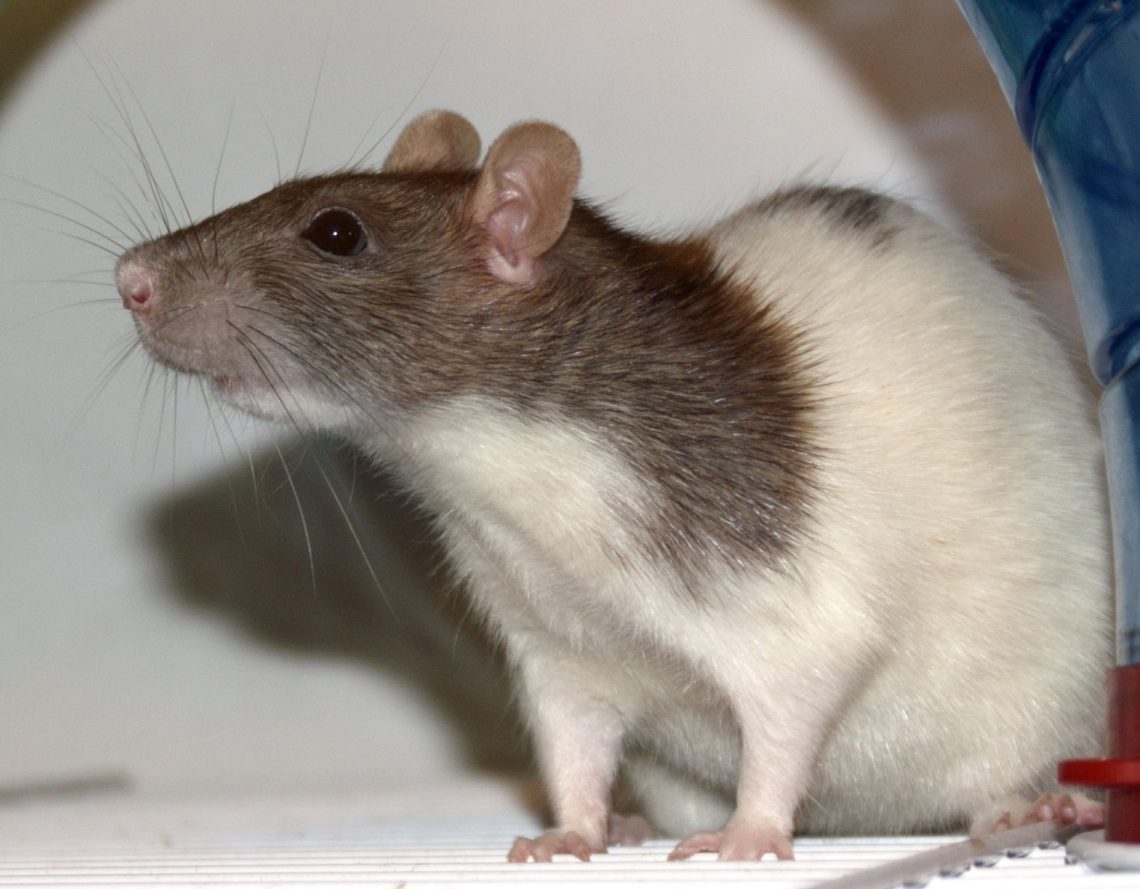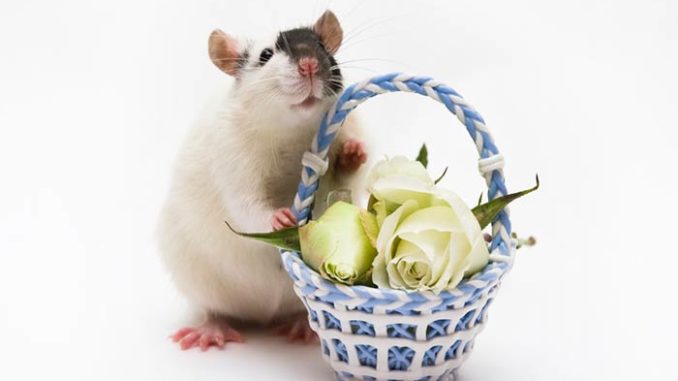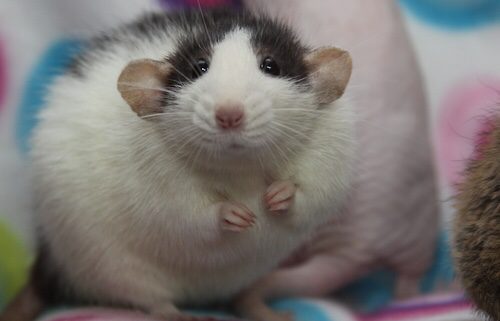
How many years do decorative rats live at home

The lifespan of rats is short, although it is sad to realize. The life expectancy of a rat depends on many factors, but it is impossible to extend it for years. By providing the animal with appropriate conditions, you can minimize the risk of pet diseases.
Contents
How long do rodents live in the wild
The free way of life for rodents has more minuses than pluses. Newborn rats can be eaten by relatives, growing babies are ready to be dragged away by birds of prey, cats and dogs. The life of an adult animal is also full of dangers: people are not happy with such neighbors, garbage dumps are not filled with healthy food, the weather is not always ideal. Wild rats in such conditions live from six months to 1,5 years, if you’re lucky.
How long do rats live at home
It is customary to put forward different versions of the life span of ornamental rats. The peak of longevity is 7 years, and it is noted in the book of records. However, practice shows that, in fact, rats live 2-2,5 years. On average, out of 100-120 rodents, only 3 live up to 3 years. Males succeed more often than females. For a pet 3 years old, this is already a deep old age, and if he managed to reach 3,5 years, this is almost the limit.
Why rats don’t live long
The lifespan of different animal species is laid down at the genetic level. It depends on the ability of the animal to reproduce. Rats can breed as early as 1,5 months. A rodent can have up to 14 cubs in a litter. The lactating rat is ready to become pregnant and give birth to new offspring. For this reason, animals of different sexes cannot be kept in the same cage: this is an extra burden on the female.
Another reason for a short lifespan is a fast metabolism. Because of this, the rat can die without food after 2 days.

How do the life spans of rats of different breeds differ?
To date, several breeds of rats have been bred, which differ in the structure of the coat, color, and the location of the ears. There is a breed of tailless rodents. Although here the question is debatable whether they can be distinguished into a separate breed. If you take a few of the most famous breeds, you get the following:
- standards – rats, similar to wild ones. They can have different colors, for example, a blue rat is distinguished by an azure shade of a fur coat;
- bald sphinxes – animals without hair;
- rex – have short curly hair;
- double rex – shedding rats with hair of different lengths;
- dambo – animals with large “elephant” ears;
- tailless;
- husky – color like a dog of the same breed;
- satin – animals with fine shiny hair.
This is an approximate list that will allow you to select individual breeds according to their endurance.
White rats of different breeds live the least. This is due to the fact that they were bred as laboratory animals, therefore they have certain damage in their genome. Animals rarely reach 2 years of age.
Sphinxes are quite vulnerable. Lack of hair increases the risk of skin injury and related infections. The naked body suffers from temperature changes and sunburn.
Tailless individuals are deprived of balance – the steering wheel, which increases the risk of injury. The tail also serves as protection for the back of the animal.
What determines the lifespan of a rodent
The peculiarity of these rodents is that many lines were bred for laboratory testing. This means that animals were selected and crossed with given qualities. Some carry the obesity gene – the Zucker line, others are “sharpened” for arterial hypertension – rats with high blood pressure. For science, animals with oncogenes and immunodeficiency were in demand. If a rat carries such a gene, it has a high risk of developing the disease, and it is difficult to predict how long the animal will last with such heredity.
The second dangerous moment is inbreeding – inbreeding, when the offspring gradually degenerates. Such animals are taken out not only for research, but also for food.
If a rat has a genetic disorder, it will not live long.
To avoid buying a laboratory or feed animal, you can not buy a pet in the market, in a pet store or through an ad. You should choose an animal through clubs of rodent lovers by going to a specialized forum. So there is a chance to buy a potentially healthy pet. One of the decorative breeding lines is Wistar.
Why do animals suddenly die?
The life of a domestic animal on a free range is dangerous. The house is full of inedible detergents and cleaning products, current flows through the wires: you need to understand that the rat will definitely try everything that is in its field of vision. The owners of the apartment do not always look at their feet and tend to move heavy furniture to those places where a curious animal accidentally wandered. An unsuccessful fall after climbing the curtains or a careless exit to the balcony can end fatally.
Terriers, dachshunds and cats with a strong hunting instinct are a deadly threat to a tame rodent. Through an open door, a pampered pet can get out into the street, where he has no chance of survival. All these troubles can be avoided if you keep the animal in a cage, walking under supervision in a fenced off area.
Particularly reverent pets can die of a heart attack, frightened of something.
How to extend the life of a pet

Based on the fact that the average life expectancy of a rat is 2 years, you can try to increase this period by surrounding the animal with attention and care.
Disease Prevention
It is easier to prevent the cause of the disease than to deal with the consequences. Proper care will avoid many problems. The rat cage should be cleaned and washed regularly with a mild disinfectant solution. The water in the drinker should be clean, it needs to be changed every day. It is better to use regular filtered water. You should regularly remove leftover food that decomposes and can provoke illness.
Avoid coniferous filler. It is not suitable for rodents. You can use corn or just lay toilet paper on the animals.
Don’t overcool your pet. Drafts and improper placement of the cage can provoke a cold.
Place the newly acquired animal separately in quarantine so that it does not infect the old inhabitants of the cage. Get an ultraviolet lamp to disinfect the room. Find a veterinarian who specializes in rodents to contact in case of illness.
Health monitoring
The habit of watching pets will allow you to learn a lot about them, and at the same time notice the signs of an incipient disease. If the animal does not eat well, stops playing, looks lethargic or has discharge from the nose or eyes, and the fur has become disheveled and untidy, consult a doctor immediately. Infectious diseases occur very quickly in rodents, so there is a risk of losing the animal. Diarrhea, not associated with an excess of vegetables, also speaks of the disease.
Examine the pet’s feces, it may contain helminths – worms. The fact that the rat itches intensely should be alert – there is a risk of parasitic diseases. A rodent dragging its hind legs also requires attention – this is a common problem of an aging rat. Elderly animals are prone to tumors, heart attacks and strokes.
Conditions of detention
How many years domestic rats live is directly related to the conditions of detention. This is affected by:
- cage size – at least 60x40x50 cm (width-length-height) for 2 animals, and for females it is better to make high multi-level cages, and for males, floor space is important;
- cage equipment – hammocks, shelves, etc.;
- neighborhood – rats are pack animals, therefore it is better to keep two, three, but no more than four same-sex animals together;
- the possibility of walking in a fenced area or sofa;
- sports load in the form of an obstacle course in the playing area;
- owner’s attention. Rats are gentle creatures that become attached to humans;
- security of space – shelters, as a prevention of stress.
If a domestic rat lives in such a room, and even with regular walking, then this helps her maintain health and good mood.
Proper nutrition
A balanced diet of grains, small amounts of fruits and vegetables, with occasional additions of protein will keep the animals feeling good. You can not feed the animals with food from the table or overfeed them with high-calorie foods. To prevent dental diseases, you need to keep a mineral stone in the cage for grinding incisors.
If a decorative rat lives comfortably at home, then it is more likely to reach a “respectable” age. Although the life span of a pet is short, it will saturate the life of the owner with vivid impressions and deep affection.
How long do domestic rats live
3.2 (63.55%) 338 votes





